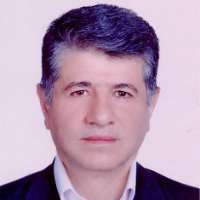A Graph-Based Statistical Approach to Identifying Functional Connectivity Networks in Patients with Traumatic Brain Injury
Traumatic brain injury (TBI) is one of the most common types of brain injuries associated with cognitive impairments. Functional magnetic resonance imaging (fMRI) studies can provide a unique opportunity to examine brain connectivity patterns and understand the neural substrates of cognitive outcomes following traumatic injury. Therefore, this study aims to determine changes in functional connectivity patterns in patients with TBI compared to healthy individuals using two graph models, adaptive dense subgraph discovery (ADSD) and variance component.
This study used fMRI data downloaded from https://openneuro.org. These data included 14 patients with TBI aged between 18 and 36 and 12 healthy individuals (female: N=6, male: N=6) aged between 19 and 52. Out of the 74 regions examined, a cluster of 18 regions related to TBI was identified using the ADSD model. Subsequently, these identified regions were used as input for the variance component model to investigate changes in connectivity patterns.
Functional connectivity between an 18-brain region cluster, such as the Rectus (Left, Right), Supp_Motor_Area (Left, Right), and Middle Cingulum (Left, Right), differed between the patient and healthy groups. Based on the analysis of functional connectivity between pairs of brain regions, 153 connections between pairs of brain regions were compared in the two groups, out of which 63 connections showed significant differences between the two groups. Compared to other regions, Supp_Motor_Area_Right and Rectus_Left had more connections.
The study’s results indicate that the functional connectivity between the Cingulum, Hippocampus, Fusiform, Supp_Motor_Area, and Precentral regions differs between the two groups. Since these regions are involved in processes such as memory, learning, spatial orientation, face recognition, coordination, and motor control, changes in their functional connectivity may lead to impairments in these areas
-
Using Longitudinal Variance Components Models to Assess Hyper-connectivity in Severe Traumatic Brain Injury Patients
Keyvan Olazadeh, Nasrin Borumandnia, Mahin Habibi, *
Basic and Clinical Neuroscience, Jul-Aug 2024 -
Childbearing challenges in breast cancer survivors: a systematic review
Behjat Khorsandi, Mahrokh Dolatian *, Zoherh Mahmoodi, Mohammadali Broomand,
Iranina Journal of Obstetrics Gynecology and Infertility,



